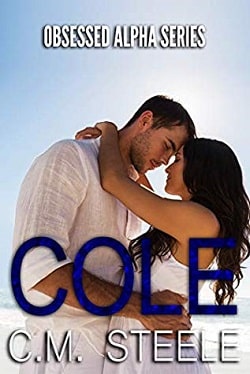“I’d say so,” I agreed.
“Although we might find out that the real motive was something else entirely.”
“Such as?”
“Well, suppose the pastor were having an extramarital affair with one of his parishioners, and the woman’s husband found out he’d been cuckolded by the pastor. The husband might murder the pastor—a classic revenge killing—but make it look like a hate crime, to deflect suspicion. We’d start out investigating that murder as a hate crime, but pretty soon, I hope, we’d discover the real reason for the crime. Does that make it clearer?”
“It does,” I said slowly.
“You don’t sound convinced.”
“I’m not unconvinced. I’m just thinking about evidence that’s not as obvious as a burning cross.”
“Dr. Brockton, are we talking hypotheticals here, or is there something specific on your mind? Because the Bureau doesn’t generally deal in hypotheticals.”
Here we go, I thought. Price was forcing me to lay my cards on the table, and I knew my hand was weak. “There’s a case—actual, not hypothetical—that I’m working on. A young man was chained to a tree in the woods. He was kept alive, possibly for weeks, and then finally killed by a bear. He’d been smeared with bear bait and raw bacon, so I’m thinking the killer wanted him to suffer a while first, then be attacked by the bear. By the time he was found, he was just bones. And not that many of ’em.”
“This was up in Cooke County?”
I was surprised, because I’d seen no news coverage of the murder. “You already know the case?”
“No,” she said. “I already know Cooke County. Where else would you find a crime like that?”
“Ah.”
“So what else can you tell me about the victim? He was young and male. Black, or white?”
She was already drilling into the nerve. “To be honest, we don’t know yet. Without a skull or intact long bones, it’s hard to make a determination.”
A pause. “So what makes you think you’re looking at a hate crime?”
“For one thing, the staging, if I’m using that term right. The victim was made powerless. Naked and chained. Fed like a dog. Smeared with bear bait and bacon grease. Seems like the killer wanted to humiliate him as much as possible. Make him less than human.”
“But that doesn’t prove bias or hate,” she said. “Just cruelty.”
“There is one piece of evidence,” I began. “A coin found at the scene. A collector’s item. A commemorative coin from 1925.”
“Commemorative of what?”
“Of the huge Confederate monument at Stone Mountain, Georgia. Giant carvings of Stonewall Jackson, Robert E. Lee, and Jefferson Davis—the heroes of the Lost Cause.”
“I know who they were,” she said. “And you take an old coin as evidence of a hate crime? You can’t even tell me the victim’s race, but—let me guess—you have a hunch that the victim was a black man, and that this is a weird twist on a lynching?”
“Maybe,” I said, flinching at the withering sarcasm I could hear in her voice. “This Confederate coin looks like it was worn as a pendant. Which could indicate that Confederate ideology—specifically, racism—was important to the killer.” I paused, but she left me hanging, so I added, “It’s the only thing we’ve got that might indicate motive.”
There was a long silence. “Dr. Brockton, if that’s the only thing you’ve got, you don’t have much. If the sheriff’s office or the TBI wants to put in a formal request for the Bureau’s assistance, we’ll certainly consider it. But from what you’ve told me, this just sounds like something out of Deliverance. A backwoods case of southern gothic depravity.”
I mumbled a perfunctory thank-you and got off the line, stinging from Price’s implicit—no, her explicit—rebuke. I still believed the Confederate coin to be significant, but Price was correct: Until we could pin down the victim’s race, we couldn’t make the case for a racially motivated hate crime. I had let myself be carried away by Miranda’s certainty—Miranda’s lefty-liberal hunch—and also, perhaps, by my hope that I’d be able to persuade her not to take a job at the FBI. And my lapse in judgment had circled back to bite me.
It added insult to injury that the fresh bite marks in my backside had been inflicted by the wickedly sharp teeth of Special Agent Angela Price. It pained me particularly that the Price was Right.
I felt on safer ground and friendlier territory with my next call. As a TBI consultant, I’d always enjoyed good working relationships with TBI field agents and supervisors, and as Steve Morgan’s former teacher, I believed I had far more goodwill capital banked with Steve than I did with Price. He had certainly been friendly and helpful when I’d seen him at the death scene two days before, and I felt sure he was as eager to solve this case as I was. “Steve,” I said heartily when he answered, “it’s Bill Brockton.”
“Morning, Dr. B,” he said. I took the informality as a further good omen. “What’s up? You calling to say you’ve I.D.’d the victim and collared the bad guy?”
“I wish,” I said. “Actually, I’m calling to see if you’ve heard anything back from your DNA folks yet. Specifically, about the victim’s race?”
“No, sir,” he said, and the formality made me cringe. Not a good omen, I thought. Then: Is this how Miranda will talk to me, once she’s gone? “We don’t have anything quite yet. I know the lab got the evidence—I delivered it myself—but that was just the other day. Friday. And today’s just Monday. They don’t work on weekends, so basically this is the first workday they’ve even had the evidence.”
“How soon you reckon they’ll get to the DNA, Steve?” I tried to sound optimistic and encouraging, not impatient and demanding. Apparently I fai
led, because I heard Steve sigh.
“Thing is, Doc, they’re pretty backed up in the DNA lab right now.”
“How backed up?”
“About two months backed up, to be honest.”
“Two months? You’re saying they might not get around to this for two months?”
“That’s pretty standard,” he admitted. “Eight-week backlog is what I was told on Friday.”
“Christ, Steve, that’s terrible. Can you ask them to fasttrack this one? I can’t just spin my wheels on this for eight weeks.”
“It’s frustrating, I know. My wheels are spinning, too. But so are everybody else’s. The DNA lab gets a hundred cases a month, and they process a hundred a month. So they’re staying even, but just barely. They’re treading water as fast as they can. But right now, there’s nearly two hundred samples in line ahead of ours. Most of ’em murders and rapes.” He hesitated, but then delivered the kicker. “Can we really say that we oughta be able to cut line, jump ahead of everybody else? I know you’re in a hurry, Doc. I am, too. But so are all those homicide detectives and rape victims.”
“Crap, Steve,” I said. “Of course I’m not saying my case is more important than some rape victim’s. I know the wheels of justice are turning. I just hate it that they turn so slow.”
“You and me both, Doc. You and me both.”
CHAPTER 10
IN EXPLAINING MY FASCINATION WITH FORENSIC cases, and especially my ability to stomach gruesome details such as dismemberment, I often told students and police this: “I don’t see a murder as a death; I see it as a puzzle. If I have the skills to solve that puzzle and bring someone to justice, I’ve done a good job.”
But this time, my puzzle analogy was no longer just an analogy; this time, it had become completely literal. Arrayed on a table in the bone lab in front of Miranda and me were dozens of bone shards, their edges jagged and splintered, along with the shafts of the Cooke County victim’s badly chewed femurs. The daunting challenge—the herculean task—was to reassemble at least one of the femurs; the payoff, if I succeeded, was the answer to a crucial question in the case: Was the victim black, and killed in a racially motivated hate crime, as the Confederate coin might suggest?















